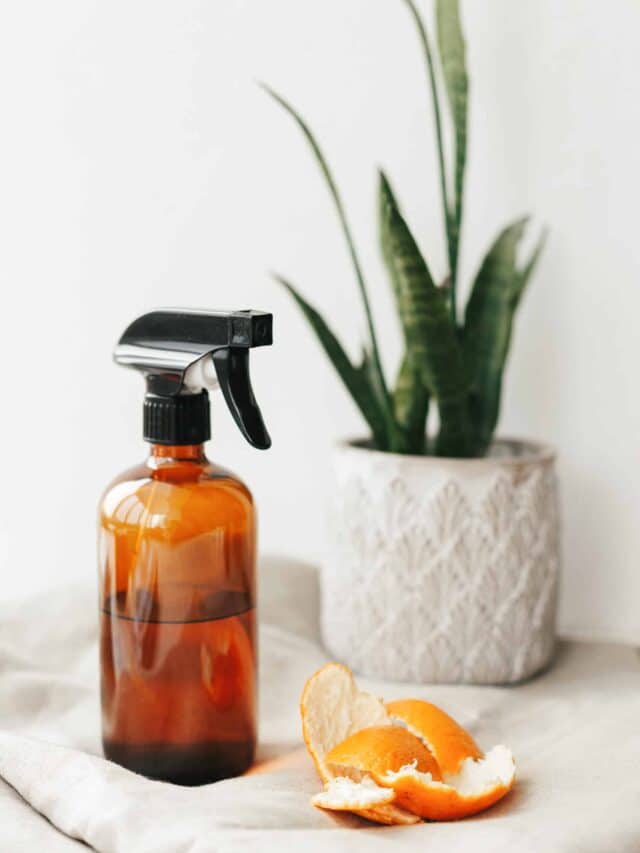50 Frugal Living Tips Our Grandparents Knew
This post may contain affiliate links. Read our disclosure policy here.
Ever wonder how our grandparents managed to make ends meet and live a comfortable life without drowning in debt? Well, they had to get creative and live frugally, making the most of what they had. Let’s delve into some time-tested frugal living tips our grandparents knew like the back of their hand.

What Does It Mean to Live Frugally?
Living frugally essentially means being mindful of your expenses and making intentional choices to save money. It involves prioritizing needs over wants, avoiding unnecessary expenses, and making the most of resources without being wasteful.
Now, our grandparents may have been masters of frugal living, but can we still live frugally in present times? Absolutely! In fact, with the rising cost of living and economic uncertainties, many families are embracing a frugal lifestyle as a practical approach to managing their finances.
Drawing inspiration from our grandparents’ wisdom, here are 50 frugal living tips that you can benefit from.

50 Frugal Living Tips Our Grandparents Knew
1. Grow Your Own
Growing your own produce is a rewarding and cost-effective way to embrace a frugal lifestyle.
Whether you have a small balcony or a spacious backyard, cultivating a garden allows you to enjoy fresh, homegrown fruits, vegetables, and herbs. This not only saves money on grocery bills but also ensures that you have access to organic, locally sourced produce.
You can start with easy-to-grow plants like tomatoes, herbs, and leafy greens, and gradually expand your garden based on your space and expertise.
2. Preserve and Pickle
Preserving and pickling are age-old techniques that add longevity to seasonal fruits and vegetables.
By canning or pickling, you can enjoy your favorite produce throughout the year, even when it’s out of season. This frugal practice minimizes food waste and takes advantage of bulk purchases or a bountiful harvest.
However, make sure to invest in proper canning jars and learn the basics of safe preservation methods.
3. Buy in Bulk
Buying in bulk is a classic frugal strategy that helps you save money in the long run.
Consider purchasing non-perishable items such as grains, pasta, rice, and canned goods in larger quantities to benefit from lower per-unit prices. This approach not only reduces packaging waste but also minimizes the frequency of shopping trips.

4. Make Your Own Cleaning Products
Creating your own cleaning products is a frugal and eco-friendly alternative to commercially available cleaners.
Basic ingredients like vinegar, baking soda, lemon, and essential oils can be used to make effective cleaning solutions for various surfaces. These DIY cleaners are budget-friendly and will help you eliminate the need for purchasing multiple specialized cleaning products.
5. Use “Just A Dap”
“Just A Dap” is a concept that emphasizes using a minimal amount of certain products to achieve the desired effect. This approach can apply to items like toothpaste, shampoo, laundry detergent, and dish soap.
By using just the right amount, you extend the lifespan of these products, ultimately saving money over time.
6. Shop Secondhand
Embracing secondhand shopping is a savvy way to save money and reduce your environmental footprint.
Thrift stores, consignment shops, and online marketplaces offer a treasure trove of gently used items, including clothing, furniture, electronics, and more.
7. Repair Instead of Replace
Before discarding a broken item, consider whether it can be fixed. The mindset of repairing instead of replacing is a cornerstone of frugal living.
Learning basic repair skills for household items, clothing, and electronics can extend their lifespan and save you money on replacements. Whether it’s sewing a torn garment, fixing a leaky faucet, or troubleshooting a malfunctioning appliance, taking the time to repair will pay off both economically and environmentally.

8. Use Coupons and Discounts
Keep an eye out for promotional offers, discount codes, and paper coupons that can significantly reduce your expenses.
Many retailers and online platforms regularly provide discounts on various products. Additionally, loyalty programs and cashback apps can further enhance your savings.
9. Cook from Scratch
Cooking from scratch is a fundamental frugal living practice that not only saves money but also promotes healthier eating.
When you prepare meals at home using raw ingredients, you have better control over the quality and nutritional value of your food. Invest in basic cooking skills, experiment with new recipes, and enjoy the satisfaction of crafting delicious and cost-effective meals in your own kitchen.
10. Master Meal Planning
Meal planning is a strategic approach to frugal living that involves organizing your meals in advance.
By planning your weekly or monthly meals, you can create a shopping list based on your needs, reducing the likelihood of impulse purchases. This also helps minimize food waste, as you buy only what you intend to use.

11. Use Kitchen Scraps
Harnessing the potential of kitchen scraps is not only a frugal practice but also a sustainable one.
Instead of discarding vegetable peels, fruit cores, and other kitchen scraps, consider ways to repurpose them. For instance, vegetable scraps can be used to make homemade vegetable broth, and fruit peels can be turned into compost for your garden.
12. Conserve Energy
Conserving energy is a multifaceted frugal living tip that not only reduces utility bills but also contributes to environmental sustainability.
Simple habits like turning off lights when leaving a room, unplugging electronic devices when not in use, and using energy-efficient appliances can result in significant cost savings. Additionally, consider installing programmable thermostats to regulate heating and cooling systems efficiently.
13. Make Your Own Bread
With a modest initial investment in baking supplies, you can enjoy the satisfaction of providing your household with wholesome, homemade bread.
Investing in basic bread-making ingredients like flour, yeast, and salt allows you to create delicious bread at a fraction of the cost of store-bought varieties. Moreover, making your own bread gives you control over the ingredients, enabling you to experiment with different flours, seeds, and flavors.
14. Use Cloth Diapers
Choosing cloth diapers over disposable ones is a practical and frugal choice for families with infants. While the initial investment in cloth diapers may seem higher, the long-term savings are worth it.
Cloth diapers are reusable and can last through multiple children, reducing the ongoing expense of disposable diapers. Additionally, using cloth diapers is environmentally friendly, as it reduces the volume of disposable diapers in landfills.
15. Cancel Unused Subscriptions
Reviewing and canceling unused subscriptions is a quick and effective way to trim unnecessary expenses from your budget.
Evaluate your streaming services, magazine subscriptions, gym memberships, and any other recurring payments. If you find that you’re not utilizing a particular service, consider canceling it.
This frugal practice not only saves money but also helps you declutter your financial commitments, allowing you to allocate resources to areas that bring more value to your life.
16. Reassess Insurance Policies
Insurance needs can change over time, and policies that once fit your circumstances may become outdated or unnecessarily expensive.
Make sure to review your health insurance, car insurance, home insurance, and any other coverage you may have, and compare quotes from different providers to ensure you are getting the best value for your coverage needs.

17. Line Dry Clothes
Utilizing a clothesline or drying rack not only conserves energy but also extends the lifespan of your clothing by reducing wear and tear from machine drying.
Moreover, sunlight provides a natural disinfectant and can help remove stains, leaving your clothes fresh and clean.
18. Practice Meatless Mondays
Incorporating Meatless Mondays into your weekly meal plan is a frugal and health-conscious strategy.
Legumes, grains, and vegetables are often more budget-friendly than meat, and exploring vegetarian recipes can introduce you to new flavors and cooking techniques.
19. Start Paying in Cash
Using cash instead of credit or debit cards helps you maintain better control over your budget. It’s a tangible way to track your expenses and avoid accumulating debt.
When you see the physical money leaving your wallet, you become more conscious of your spending habits. This can be particularly effective for discretionary spending categories, such as dining out or entertainment, where it’s easier to overspend with electronic forms of payment.

20. DIY Gifts
Creating DIY gifts is not only a thoughtful and personal gesture but also a frugal way to celebrate special occasions.
Handmade gifts can range from crafts and artwork to homemade baked goods or personalized photo albums. These gifts often carry more sentimental value than store-bought items, and the act of crafting can be a fulfilling and enjoyable experience.
21. Borrow Instead of Buy
Before making a purchase, consider whether you can borrow the item from friends, family, or neighbors. This is especially useful for tools, equipment, or items that you may only need for a short period.
Borrowing not only saves you money but also reduces clutter in your home since you won’t accumulate items you rarely use. Moreover, establishing a borrowing network with those around you can foster a sense of community and resource-sharing.
22. Host Potluck Dinners
Hosting potluck dinners is a wonderful way to enjoy good company and delicious meals without shouldering the entire financial burden.
Instead of preparing an entire feast yourself, each guest contributes a dish to share. This not only distributes the cost among attendees but also promotes a sense of community. Plus, it’s an opportunity for everyone to showcase their culinary skills and share their favorite recipes.

23. Reuse Jars and Containers
Instead of buying new containers for storage, consider reusing glass or plastic jars from food items like sauces, jams, or pickles. These containers are versatile and can be used for organizing pantry staples, storing leftovers, or even creating DIY gifts.
24. Make Coffee at Home
Making coffee at home can add up to substantial savings over time, especially for those who enjoy a daily cup of coffee, and also allow you to customize your brew to suit your taste preferences.
Instead of frequenting expensive coffee shops, consider investing in a quality coffee maker and buying your favorite coffee beans in bulk. Additionally, investing in a reusable travel mug reduces the environmental impact associated with disposable cups.
25. DIY Home Repairs
Learning basic DIY home repair skills empowers you to address minor issues without the need for costly professional services.
Resources like online tutorials, DIY books, and community workshops can provide guidance on various home repair tasks, from fixing leaky faucets and repairing squeaky doors to patching up small holes in the wall,
26. Unplug Electronics
Unplugging electronics when they’re not in use is a simple yet effective way to save on energy costs.
Many devices like chargers or appliances consume a small amount of energy even when turned off, referred to as standby power or “phantom” energy. So, you might want to consider unplugging some of these devices when you’re not actively using them.
27. Use Public Transportation
Explore available public transportation options in your area, and consider incorporating them into your daily commute. This can be more cost-effective than maintaining a personal vehicle, especially when factoring in fuel, maintenance, and parking expenses.
Additionally, it reduces your carbon footprint and contributes to less traffic congestion.

28. Negotiate Prices
Negotiating prices is a valuable skill that can lead to substantial savings.
Whether you’re purchasing goods or services, don’t be afraid to ask for a discount or negotiate terms. This is particularly applicable to larger purchases, such as furniture, electronics, or services like home repairs.
Do your research, compare prices from different sellers, and remember that many businesses will be willing to negotiate, especially if it means securing a sale.
29. Create a Budget
Creating a budget is a foundational frugal practice that provides a clear overview of your income and expenses. By tracking your spending and adhering to a budget, you gain better control over your finances and identify areas where you can cut back or save more.
There are numerous online tools and apps that can help make budgeting more accessible, allowing you to set financial goals and make informed decisions about your spending habits.
30. Consider Free Entertainment Sources
Exploring free entertainment sources is a frugal way to enjoy a fulfilling and varied leisure life without spending a dime.
Look for community events, local parks, and cultural activities that offer free admission. Libraries often host free events, and many cities have outdoor concerts, festivals, and art exhibits that are open to the public. You can also simply embrace nature by hiking or taking scenic walks in nearby parks.

31. Make Your Own Snacks
Making your own snacks at home, such as granola bars, trail mix, or even homemade popcorn, is a cost-effective way to enjoy tasty treats while avoiding the often higher prices of pre-packaged snacks.
It also allows you to control the ingredients and portion sizes, which promotes healthier eating by reducing reliance on processed and packaged snacks.
32. Invest in Reusable Water Bottles
Instead of regularly purchasing single-use plastic water bottles, consider investing in a reusable and durable reusable bottle. This helps cut down on plastic waste and eliminates the need for continuous spending on disposable water containers.
Many places now offer water refill stations, making it convenient to stay hydrated while reducing your environmental impact.
33. Shop Generic Brands
Choosing generic or store brands over name brands is a classic frugal strategy.
In many cases, generic products offer similar quality at a more affordable price tag because these brands don’t spend as much on marketing and branding.
By opting for generic alternatives, you can save money on everyday items such as groceries, medications, and household products without sacrificing quality.
34. Avoid Impulse Buying
Before making a purchase, especially on non-essential items, take a moment to consider whether it’s a want or a need.
It’s best to create a shopping list and stick to it, avoiding temptations that can lead to unplanned or unnecessary purchases that can quickly add up.
35. Cancel Cable
Canceling cable in favor of more affordable streaming services can significantly reduce your monthly entertainment expenses. With the abundance of streaming platforms offering a variety of content, you can tailor your subscriptions to your preferences.
This not only saves money but also allows you to have more control over your viewing options, as you will only pay for the content you truly want to watch.

36. Learn Basic Sewing
Learning basic sewing techniques doesn’t require advanced skills; even simple repairs can save you money in the long run and promote a more sustainable wardrobe.
Being able to mend clothing, sew on buttons, or make simple alterations can extend the life of your garments, reducing the frequency of new clothing purchases.
37. Implement a No-Spend Challenge
Implementing a no-spend challenge involves setting a specific period during which you commit to spending money only on essential items.
This is a great way to reassess your spending habits, identify unnecessary expenses, and redirect your focus towards savings goals.
38. Handwash Dishes
Handwashing dishes instead of using a dishwasher can save on water and energy costs.
For small loads of dishes, washing by hand can be more efficient and economical. It also allows you to use minimal dish soap and control water usage.
39. Use Loyalty Programs
Taking advantage of loyalty programs offered by retailers allows you to earn discounts, cashback, or rewards on your purchases.
Many stores offer loyalty cards or apps that track your spending and provide benefits such as exclusive discounts or points that can be redeemed for future purchases.
40. Limit Takeout and Dining Out
While occasional restaurant visits can be a treat, frequent dining out or ordering takeout can quickly add up.
By preparing meals at home and saving dining out for special occasions, you not only save money but also have more control over the ingredients and portion sizes of your meals.

41. DIY Home Decor
DIY projects not only save money but also allow you to express your personal style and add a custom touch to your home.
Instead of purchasing expensive art or decorations, consider making your own. This could include crafting wall art, repurposing furniture, or creating unique decor items.
42. Fix Leaks Promptly
Regularly check for and fix leaks in your home to prevent wasting resources and avoid more significant issues down the line.
Whether it’s a leaky faucet, a dripping pipe, or a running toilet, taking immediate action can save water and reduce your utility bills.
43. Shop Off-Season
Retailers often offer significant markdowns on seasonal items as they make room for new inventory. By purchasing winter clothes in the summer or vice versa, you can enjoy substantial discounts on quality items.
44. Use a Programmable Thermostat
Programmable thermostats allow you to set temperature schedules based on your daily routines. For example, you can lower the temperature when you’re away or asleep and raise it when you’re at home.
This automation helps optimize your home’s energy usage and reduce heating and cooling costs.
45. Explore Free Fitness Options
Instead of investing in expensive gym memberships or fitness classes, consider exploring alternatives that allow you to maintain an active lifestyle without a significant financial investment.
Activities such as walking, jogging, hiking, and bodyweight exercises can be done without any cost. Many communities also offer free fitness classes in local parks, and online platforms provide a wealth of free workout videos.

46. Make Your Own Beauty Products
DIY beauty products not only save money but also give you control over the ingredients, reducing exposure to potentially harmful chemicals.
Many skincare and haircare items can be made using natural ingredients found in your kitchen, such as coconut oil, honey, and essential oils.
47. Limit ATM Withdrawals
Frequent ATM withdrawals often come with transaction fees, which can add up over time.
It’s best to plan your cash withdrawals strategically and try to use ATMs affiliated with your bank to minimize fees. This ensures that you have cash when needed without incurring additional costs.
48. Maintain Your Car
Adhering to a routine car maintenance schedule, such as oil changes, tire rotations, and brake inspections, can help your car run efficiently, extending its lifespan.
Moreover, addressing issues promptly can prevent more significant problems, ultimately saving you money on major repairs and improving fuel efficiency.
49. Buy Used Appliances
Opting for used appliances is a frugal way to furnish your home without the high cost of brand-new items.
Many gently used appliances are available for purchase at a fraction of the original price. You can explore local classifieds, online marketplaces, or thrift stores to find pre-owned appliances in good condition.
50. Teach Kids About Money
Teaching your kids about money from a young age lays the foundation for financial literacy and responsible spending habits.
Encourage them to understand the value of money, budgeting, and saving from a young age. You can talk about about spending choices, saving goals, and the concept of delayed gratification.
Incorporating these frugal living tips into your daily routine promotes financial mindfulness, environmental responsibility, and overall well-being. Our grandparents really knew a thing or two when it came to saving money, and we’d be wise to heed their advice.
Living frugally doesn’t mean being stingy or sacrificing your happiness and comfort; rather, it’s about making smart financial decisions to achieve long-term goals.
What are some of the tips your grandparents gave you for saving money? What are some of your long term goals with frugality?

Merissa Alink
Merissa has been blogging about and living the simple and frugal life on Little House Living since 2009 and has internationally published 2 books on the topic. You can read about Merissa’s journey from penniless to freedom on the About Page. You can send her a message any time from the Contact Page.
This blog post on Frugal Living Tips that Our Grandparents Knew was originally posted on Little House Living in February 2024.



This is a fantastic List. The insurance re-assessment was a great point, one I would have never thought of!